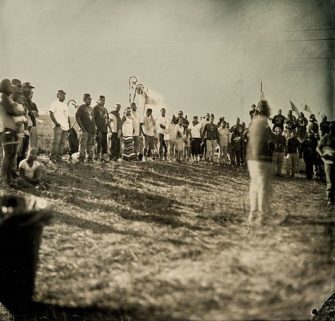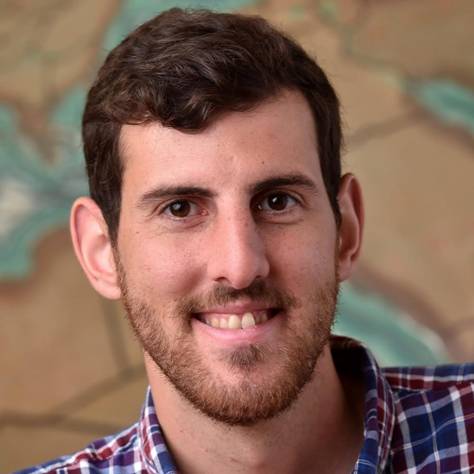
Within the Christian context, I argue there are three common ways in which prayer relates to action. Here I broadly conceive of prayer as an attempt to connect to the divine. Action refers broadly to attempts to influence society beyond the Christian community. Prayer instead of action, prayer as action, and prayer in support of action. None of these common conceptions, however, fit the way prayer and action seemed to be related at the Standing Rock camp. The best explanation, using the above language, would be action as prayer.
Upon arriving at the camp visitors were taken through an orientation based on the seven Lakota values. The first value was prayer. The orientation explained, “This is a ceremonial camp. Act accordingly.” It went on: “Remember why we came here: to stop the pipeline as a ceremonial camp.” The camp itself (both the physical encampment and the community within the camp) was both an act of resistance to the pipeline and a place of ceremonial prayer. Within the camp there were many different forms of prayer ceremonies. Every meeting began and ended with a prayer from any faith tradition who wanted to share, the diversity bound by a common goal. There were sacred fires, water ceremonies, and prayer songs among other forms of prayer. Even direct actions such as marches were considered a form of prayer.
The direct action training led by Indigenous Peoples Power Project employed twelve principles for direct action. The list begins: “We are Protectors not Protesters. We are Peaceful and Prayerful.”[1] This was not mere sentiment. Before people participated in direct actions they were reminded that those actions were a form of prayer, and that they should go with a prayerful attitude, remembering that their ancestors were watching, and that they were participating not only for their own grandchildren, but for the grandchildren of the police and DAPL employees too. The actions were seen as one of the forms of prayer. Those taking action were reminded of the spiritual aspects of their work.

The prayer practices at Oceti Sakowin camp offered a holistic and positive relationship between prayer and action, a relationship not often found between prayer and action within Christianity.
The practice of praying without taking political action, or prayer instead of action, is founded on the belief that the Godly realm and the earthly (political) realm are separate and in conflict. Therefore, rather than appealing to “earthly powers” one is best served by appealing to God as the greatest power. In the positive sense this offers hope to those in a state of complete despair. If people feel there are no other acceptable actions available to them or that political powers have irreconcilably harmed them, prayer offers a form of hope in the divine. The suggestion “just take it to God” comes to mind.
However, this can lead prayer to have a negative (oppositional rather than complementary) relationship with action. The understanding has led to a reluctance toward engaging in political action, as the latter is seen as futile, or worse, as appealing to a “false idol.” For example, a Mennonite bishop during the U.S. Civil War extolled his congregants to pray to God rather than petition the president, stating, “What is the president? But a poor dying mortal like ourselves.”[2] Today, there are still some in the Christian tradition who will disparage political action as unfaithful, or even idolatrous, because it appeals to society rather than to God. This understanding is more common in Mennonite circles than in most other forms of Christianity.
The second relationship is that of prayer as a form of political action. This is perhaps the most common relationship. It includes prayer for political leaders, prayer for faith based organizations, or prayers of petition regarding social and political issues. When faith based organizations speak to churches about ways congregants can partake in their work, prayer is almost always mentioned as a way for the church to be involved. In the positive sense this offers congregants a way to connect their faith deeply with the action that is happening. It also connects the work of the organization to the work of the church.
But this can also establish a negative relationship between prayer and action. It can excuse churches from offering more direct support for changes they would like to see. Prayer becomes a substitute for political or social action. Rather than becoming active, congregants are offered a form of ‘involvement’ that demands no real commitment of resources, time, or money. You can hear a critique of this way of thinking in a quote attributed to Pope Francis: “You pray for the hungry, then you feed them. That’s how prayer works.” What he offers instead is prayer as a call to action. This is a form of the third relationship.

The third relationship is that of prayer in support of political action. In this understanding prayer can help catalyze political action, help orient political action, or help rejuvenate political actors. This may include prayers of discernment, meditations, prayer retreats, or centering prayers. The concept is that times of prayer help committed spiritual individuals do their work better. This concept connects prayer to action in a complementary relationship.
While the relationship here may be complementary, it nonetheless suggests a strong dichotomy between prayer and action. Prayer is no longer a way of promoting social change, like in the other concepts, but a support to those who are acting for social change. There is a time of prayer, then there is a time of action. To use Pope Francis’ statement as an example, one prays for the hungry, then stops prayer and starts feeding the hungry. The prayer and the action are distinct. None of these three understandings hold prayer and action together positively and holistically, in the way shown at Standing Rock.
I do not have the expertise or experience to comment on Native American spirituality, but I did recognize the Standing Rock organizers viewed the relationship between prayer and action in a way that is not often expressed in Christianity. Action as a form of prayer. Though it is not a commonly expressed conception in Christianity, that does not mean it would not fit within the Christian tradition. In fact, there are some scriptural passages that may support it. For example, the command to pray without ceasing implies that prayer is part of every action, including political actions. More directly, the suggestion that, “in everything you do, in word or deed, do everything in the name of the Lord Jesus, giving thanks to God the Father through him,” seems to suggest one should conceive of actions as a form of prayer. Or to paraphrase Pope Francis, by feeding the hungry you pray for them.
Reflecting on the Native American traditions expressed at Standing Rock offers a critique of common Christian understandings of the interplay between prayer and action. It also offers an alternative understanding which has not been widely entertained. It is time we Christians more deeply engage the indivisibility of prayer and action offered by conceiving of action as a form of prayer.
[1] Indigenous Peoples Power Project, “Direct Action Training,” (Standing Rock North Dakota, December 1, 2016).
[2]John M Brenneman, “Cover Letter to Petition”, Mennonite Historical Bulletin 34 (October 1973), 3.

